In the heartland of Italy’s food
Good food. These are the two words that go to he heart of Italy’s Cuneo region.
It strikes you wherever you go, whether it is a fancy restaurant, a small sidewalk eatery or some food festival which the locals are fond of staging. Food is a mainstay of their culture, probably more so than with all the rest in a country where good eating is prized.
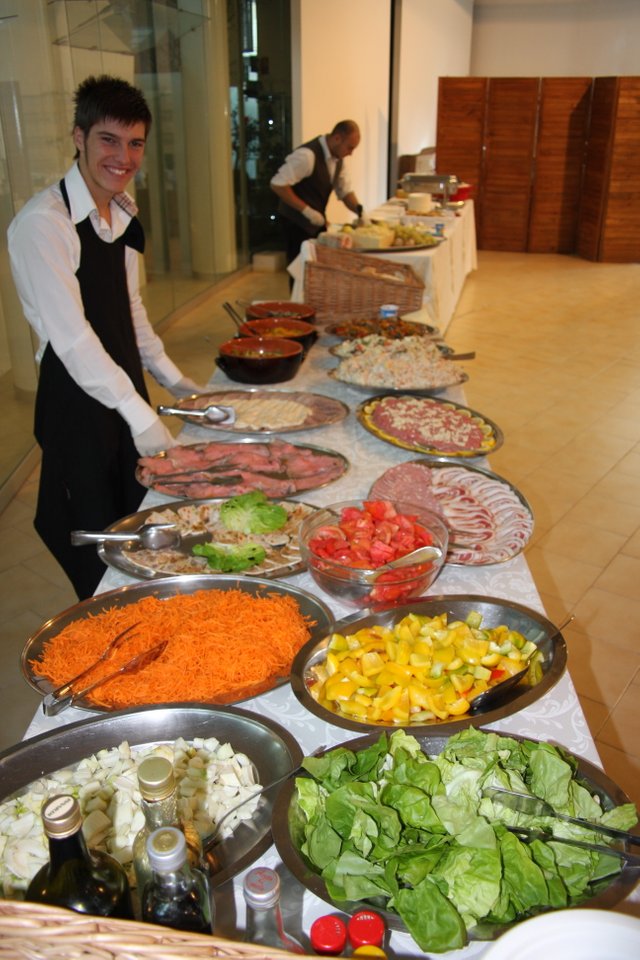
The colourful display of a Cuneo food table.
The scenery is exquisite too. The region occupies the nook of the Maritime Alps where they curve into France before starting their slow swing eastward between Italy and Switzerland. Many streams gurgle down the mountainside from snow-covered peaks to water the green pastures and crop fields among the low hills and valleys along the mountain foot, from which the region takes its name of Piedmont.
The town of Cuneo has an interesting history. Wedged into the confluence of the Stura di Demonte and Gesso rivers, it has been so coveted since its founding about 800 years ago that at one stage of its early life it had to fight off so many desirous armies in succession that it became known as the “the Town of the Seven Sieges”.
The massive walls that once ensconced it are gone now, but the large piazzas and the neatly spaced streets branching from the wide Via Roma that runs through its middle still give it a military feel. But nowadays it is armies of tourists that are the invaders, and for many it is the food they are after.
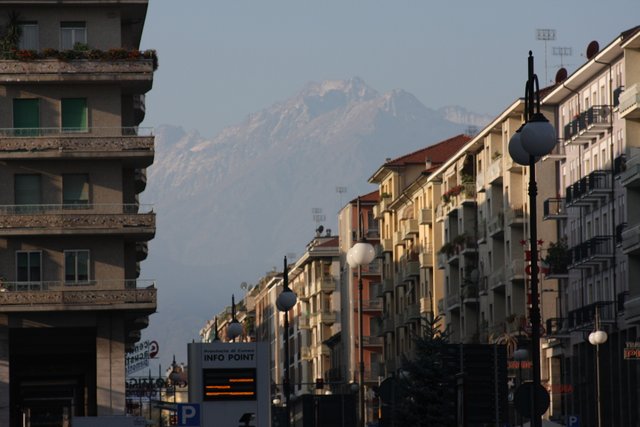
The Maritime Alps in the background as seen from Cuneo’s main street.
It is no coincidence that the region is known as the birthplace of the Slow Food Movement that strives internationally to preserve traditional and regional cuisine and encourages farming of produce that befits local ecosystems. It is also home to a University of Gastronomic Sciences.
The locals have a quaint way of describing the essence of their culinary style. They say their region is where the French cheeses get a bit harder and the Italian cheeses somewhat softer. With the border with France being not too far away in the Alps, the long and close connection between the two peoples has given the Cuneo community a considerable French aspect.
I visited Cuneo as a guest of the Rome-based Greenaccord environmental association. One of the speakers who addressed our conference at the time was Pietro Blengini, Cuneo province’s tourism councilor. He spoke of a transfrontier arrangement with the French side that aimed at jointly promoting the entire scenic region the two sides shared.
There is so much we have in common. Our cheeses have the same characteristics. The French are proud of their black truffle, we of our white Alba truffle. We can encourage people to come and try out both, he said.
Happily our Greenaccord conference happened to coincide with the region’s annual October chestnut festival that is staged in white tents stretching from the large piazza right down the Via Roma to where it runs into a traffic circle featuring statues of a nude man and woman, probably a god and goddess, reclining with their backs to the city in a beautiful bed of flowers.
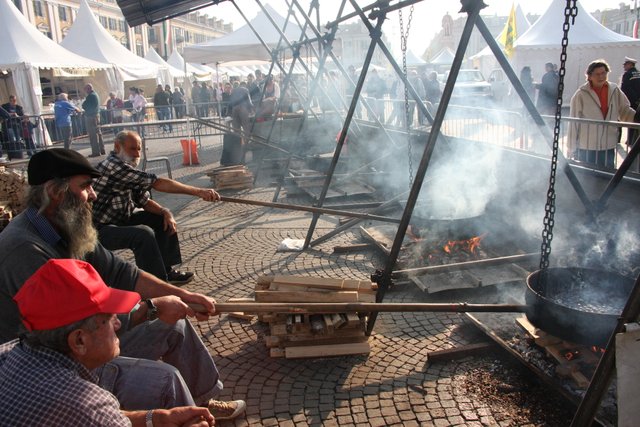
The chestnut festival in full swing.
The theme of the festival was presented by two bearded fellows roasting chestnuts over an open fire at the piazza’s entrance to the Via Roma. Sitting in comfortable chairs they rocked the roasting baskets gently by their long handles, every now and then turning the chestnuts by expertly shooting them up in the air and catching them in one swift motion. They constantly had photographers trying to catch the movement.
The stalls offered a variety of chestnuts and sweets and cakes with chestnut as an ingredient. There were also striking displays of local cheeses, preserves, fruit, cured and smoked meats and salami, all produced locally. Several proffered rich assortments of chocolates, including a type called Cuneesi al rhum, which has a rum-based filling and is a specialty of the region.
The dinners we got treated to invariably came to at least five courses. Risotto was a standard item as it is a rice-growing region which even has its own annual rice fair.
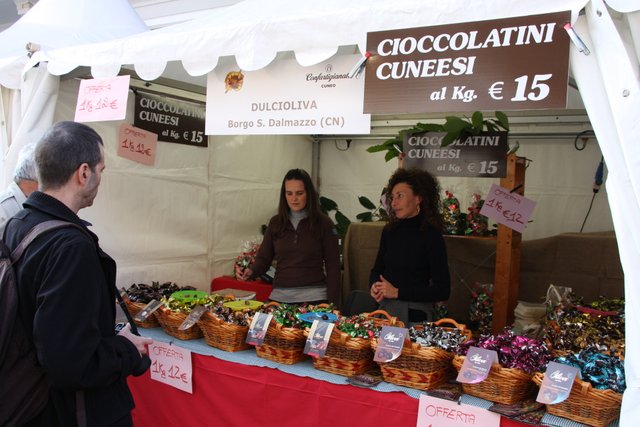
A feast of sweets made in the Cuneo region.
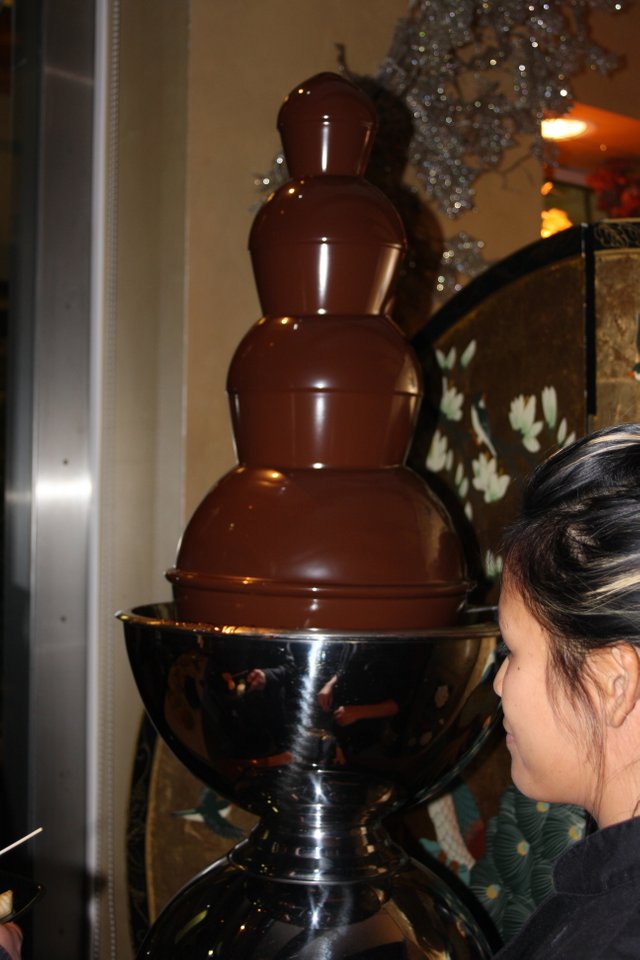
A chocolate fountain in a restaurant.
I at one dinner asked our hosts to translate items on the menu. One came to risotto with squash with a sauce of three roasted meats. The meat dish was translated into roasted neck of the she-veal from Piedmont. There was also gateau of ramassin (a local small plum) with honey and cheeses, and a dessert of bavarese of local chestnuts with chocolate topping.
Along with all that came some of the region’s prestigious wines, like Barolo, Barbaresco, Barbera, Dolcetto d’Alba and Nebbiolo.
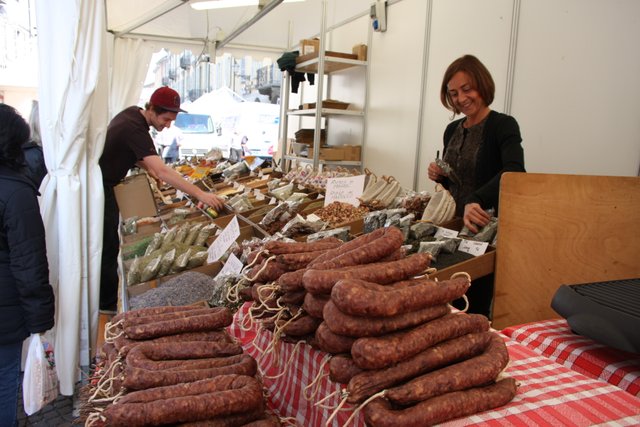
Sausages, salamis, smoked meats, these all are on the Cuneo menu.
I wandered along the old city’s porticoed sidewalks which together come to about eight kilometres. These were constructed to allow people to do their shopping and window-shopping despite the quick weather changes that happen as a result of the city being so close to the mountains.
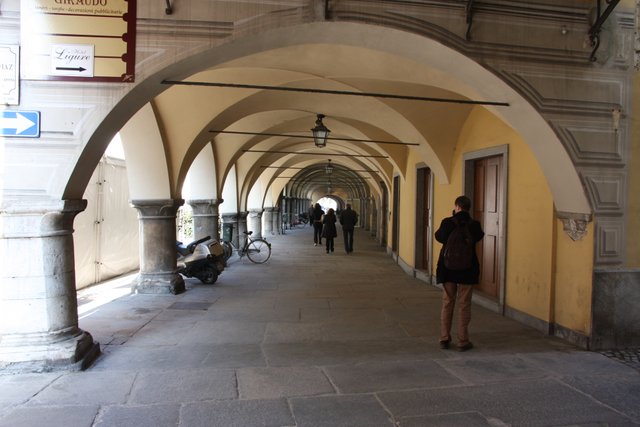
The porticoed sidewalks that allow cool and dry shopping.
From a window table in one of the eateries I watched the passing parade as I sipped wine and took time over my meal. How marvellously leisurely the pace of life was.